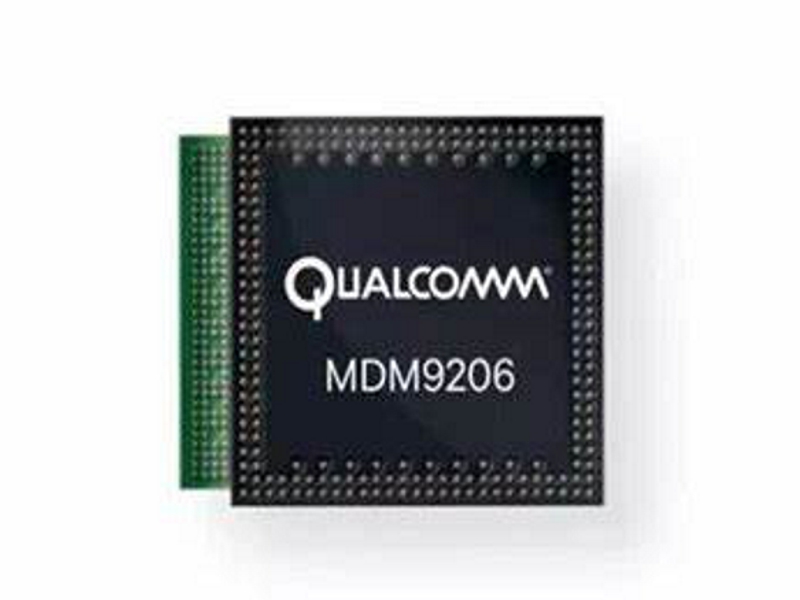NB-IoT is an emerging technology in the field of IoT, which supports cellular data connection of low-power devices in the wide area network, also known as low-power wide-area network LPWA. Cellular-based Narrowband Internet of Things (NB-IoT) has become an important branch of the Internet of Everything.
1. Qualcomm
【Headquarters】: United States
【Chip model】: MDM9206
【Chip Introduction】: Qualcomm is working with module makers so that its developers can connect and access web services through its Gizwits IoT platform. The MDM9206 chip released by Qualcomm in March 2017 has been mass-produced at the end of May. MDM9206 is a multi-mode chip for LTE IoT. It integrates three technologies: eMTC, NB-IoT and GPRS. It is the first chip to support multi-mode. The chip supports all frequency bands of Cat-M1 and Cat-NB1 LTE in the world, integrates GPS, GNOSS, Beidou and Galileo global navigation satellite positioning services, enabling low-cost, low-power, low-bandwidth, wide-coverage IoT products and Serve.

2. Huawei HiSilicon
【 Headquarters】: Shenzhen
【Chip model】: Boudica 120/Hi2110, Hi2150, Boudica 150
【Chip Introduction】: After Huawei HiSilicon acquired Neul and launched the first NB-IoT chip Boudica 120, HiSilicon continued to launch the second-generation NB-IoT chip Boudica 150, and promised to fully cover the Chinese market by the end of 2018. . Boudica 120/Boudica 150 chips are Huawei's flagship products of IoT chips. The Boudica120 chip is manufactured by TSMC, an ultra-low-power SoC chip based on the ARM Cortex-M0 core, and equipped with the Huawei LiteOS embedded IoT operating system. Huawei's current strategy to enter the NB-IoT market is to first install NB-IoT chips into various devices as much as possible, and then obtain data through the devices to serve its big data business.
3. Ziguang Zhanrui
【Headquarters】: Shanghai
【Chip model】: RDA8908A, RDA8909, RDA8910, RDA8911
[Chip introduction]: RDA8909, a subsidiary of UNISOC, has launched RDA8908A, RDA8909 and RDA8910. RDA8909 is a dual-mode chip that integrates two communication technologies, 2G and NB-IoT, and conforms to 3GPP R13 NB-IoT. The software is upgraded to support the latest 3GPP R14 standard; while the RDA8910 is a three-mode product that supports eMTC, NB-IoT and GPRS.
4. ZTE Microelectronics
【Headquarters】: Shenzhen
【Chip model】: RoseFinch7100
【Chip Introduction】: In September 2017, ZTE Microelectronics released the NB-IoT prototype chip and the world's first full-featured full-band NB-IoT chip RoseFinch7100. RoseFinch7100 has the characteristics of extremely low power consumption design, high-efficiency protocol processor, open application processor and global security. In terms of power consumption, RoseFinch7100 has achieved sleep power consumption of 2μA.
5. Intel
【Headquarters】: United States
【Chip model】: XMM 7115, XMM 7315
【Chip Introduction】: Intel XMM 7115 The Intel XMM 7115 modem is used to support the industry's first Narrow Band IOT (NB-IOT) based devices and applications. NB-IOT is a new Low Power Wide Area (LPWA) technology used to define 3GPP Release 13. 3GPP Release 13 leverages existing LTE mobile networks to more efficiently connect to hard-to-reach devices that only need to occasionally report small amounts of data.
The Intel XMM 7115 can be integrated with low-power endpoint devices such as sensors and smart grid meters to provide downstream peak data rates below 200 Kbps for devices requiring long battery life. As such, it is ideal for connected segments such as energy, agriculture and transportation.
6. Nordic
【Headquarters】: Norway
【Chip model】: nRF91
【Chip Introduction】: In January 2018, Nordic released the first NB-IoT/LTE-M dual-mode chip and module nRF91 series, becoming the fourth foreign company to release a commercial NB-IoT version after Altair, Sequans and Qualcomm chip company. Nordic's nRF91 series is a chip that supports LTE-M/NB-IoT dual-mode specified by 3GPP R13, integrating ARM Cortex-M33 main processor, ARM TrustZone security technology and GPS-assisted positioning and other functions.
The product directions released by Nordic reflect the differences between the NB-IoT and traditional baseband chip consumer markets. The traditional baseband chip market is mainly dominated by Qualcomm, while MediaTek's chips are popular in Asia, and their business model is to cooperate with mobile phone manufacturers to supply chips.
7. GCT
【Headquarters】: United States
【Chip model】: GDM7243i
【Chip Introduction】: GCT's GDM7243i has a flexible architecture that supports LTE-type M1/NB1/EC-GSM and Sigfox wireless IoT connections, and is the world's first "hybrid" solution. The GDM7243i integrates RF, baseband modem and digital signal processing functions to provide a complete 4G platform solution with small size, low power consumption, high performance, high reliability and cost-effectiveness. This chip can be used in a variety of NB-IoT applications such as smart utility meters, smart cars, homes, cities, healthcare, etc.
8. MediaTek (MTK)
【Headquarters】:Taiwan
【Chip model】: MT2625, MT2621
【Chip Introduction】: MediaTek has released two chips, MT2625 and MT2621. MT2625 is a system single chip supporting NB-IoT R14, highly integrated NB-IoT modem digital signal processor, RF antenna and front-end analog baseband, ARM Cortex-M microcontroller, pseudo-static random access memory, flash memory and power supply Snap-in unit for home automation, smart meter reading and other static or mobile IoT applications.
MT2621 is a dual-mode IoT system single chip, supports NB-IoT R14 and GSM/GPRS, adopts 32-bit ARMv7 MCU architecture, only has a single CPU core, it has a highly integrated connection platform, uses a single SIM card and The antenna can then be connected to two cellular networks with dual standby capability. Mainly for ultra-low power automation applications, IoT applications, such as wearable devices, security sensors, etc.
Learn more about the features and applications of NB-IoT



























